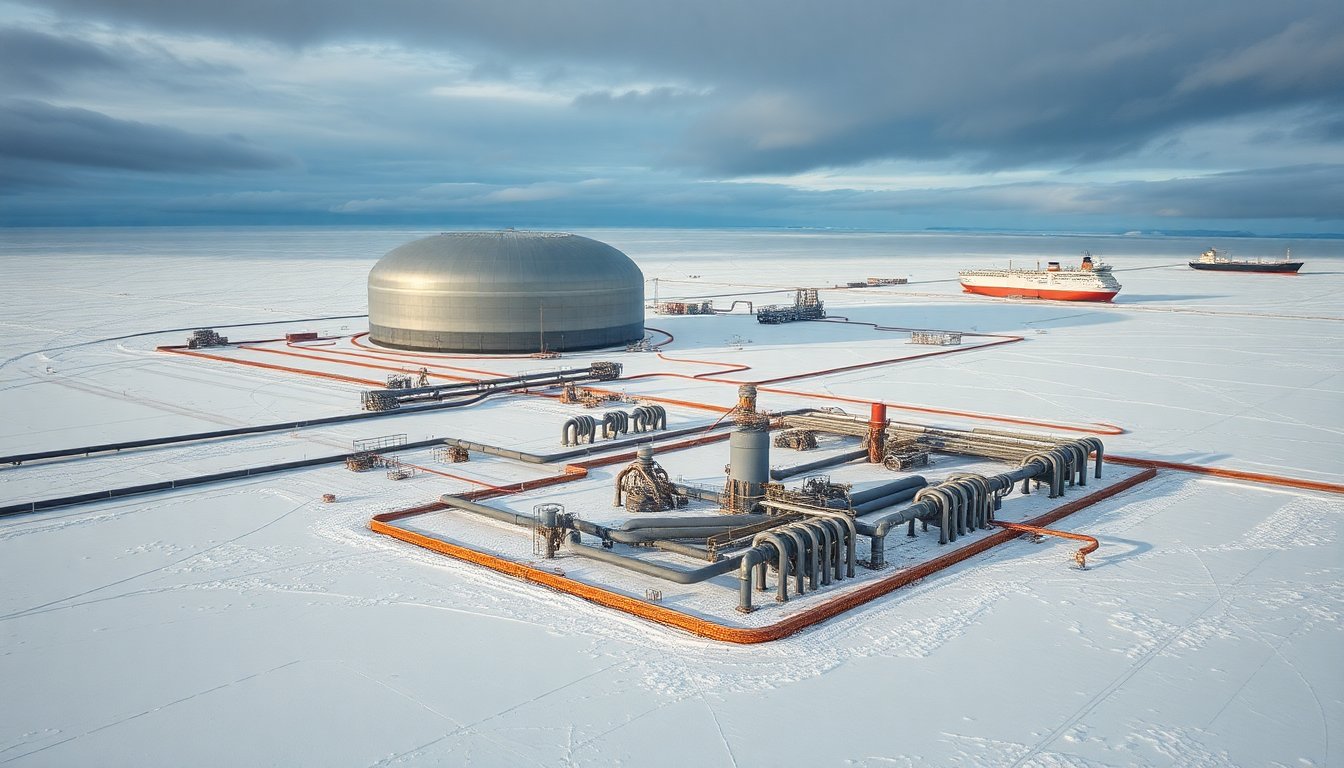Table of Contents
In the complex landscape of global energy markets, Russia has demonstrated a notable ability to navigate challenges posed by international sanctions. Despite ongoing efforts by the United States and European allies to curtail Russia’s energy sector, the nation has found innovative pathways to continue its operations.
A significant example of this resilience is evident in the Arctic liquefied natural gas (LNG) projects, particularly Arctic LNG 2, which has successfully maintained its supply to China.
As of mid-, China has received its tenth shipment of LNG from Russia’s Arctic LNG 2 project, despite sanctions imposed due to geopolitical tensions arising from the conflict in Ukraine.
This development highlights a significant loophole in the sanctions framework and underscores the strengthening energy relationship between China and Russia.
The Arctic LNG 2 project
The Arctic LNG 2 project was initially poised to become a cornerstone of Russia’s energy landscape, with an expected production capacity of 19.8 million metric tons of LNG annually.
This ambitious initiative was set in motion to leverage the abundant natural gas reserves located in the Arctic region. However, the imposition of U.S. sanctions following Russia’s military actions in Ukraine raised concerns about the project’s viability.
Sanctions and their implications
The sanctions targeted not only the financing of the project but also the companies involved in its development and operation. Nevertheless, Russia’s strategic maneuvers have allowed it to sidestep many of these obstacles. For instance, the Arctic Mulan tanker, which is also subject to Western sanctions, successfully delivered LNG to China’s Beihai terminal on October 17, 2025.
The operational dynamics of the Arctic LNG 2 project showcase the intricate web of international shipping and energy trade. The cargo was secured from a floating storage unit in Kamchatka, Russia, which is designated solely for handling LNG from Arctic LNG 2.
Following its loading, the tanker departed for China, demonstrating the project’s ability to circumvent sanctions through creative logistics.
China’s strategic energy imports
China’s increasing energy imports from Russia reflect a broader shift in global energy partnerships. As Western nations impose sanctions on Moscow, China has strategically positioned itself as a key ally, increasing its demand for Russian energy supplies. This aligns with China’s efforts to secure stable energy sources to support its growing economy.
Key players and logistics
The logistics surrounding these shipments involve various international entities. For example, the Arctic Mulan is owned by Zinnia International, with management handled by Skyhart Management Services, both of which are registered in India. Such arrangements complicate the enforcement of sanctions by Western nations, as the ownership and management of these vessels are obscured by layers of international corporate structures.
Following the Arctic Mulan, the Christophe De Margerie tanker also loaded LNG from the Arctic LNG 2 facility, departing on October 20, 2025. This vessel, registered to Zelitiko Shipping and managed by Gas Carriers SCF Management, underscores the ongoing activity at the Arctic LNG 2 project despite the pressures from international sanctions.
A resilient energy partnership
The ongoing shipments of LNG from Russia to China illustrate a resilient partnership that has weathered geopolitical storms. As Western sanctions aim to cripple Russia’s energy capabilities, the nation continues to find ways to sustain its export activities, particularly in the lucrative Chinese market. The Arctic LNG 2 project serves as a testament to Russia’s adaptability and the evolving dynamics of global energy trade.
As the situation develops, the future of Arctic LNG 2 and its role in the global energy landscape will be closely monitored. The interplay between sanctions, energy demands, and geopolitical relationships will shape the narrative of this critical energy corridor in the years to come.




